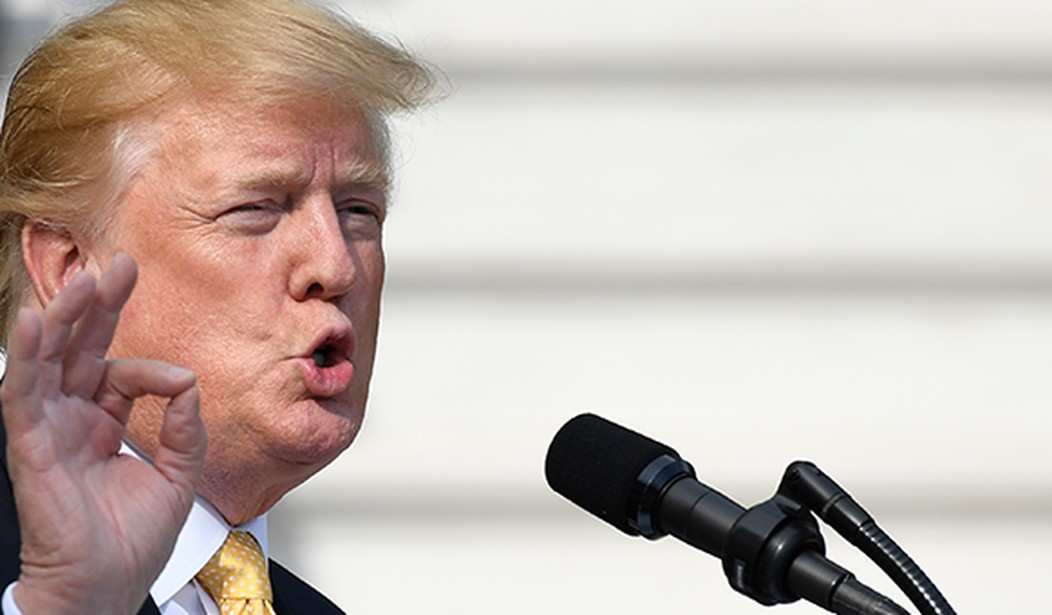The economy continues to roar, and most Americans are keeping more of the money that they earn, but Americans still disapprove of the 2017 Tax Cuts and Jobs Act. It's mind-boggling and confusing. It's easy to blame the media -- or the Democrats who have mostly demonized the act -- but maybe the cause is deeper.
Possibly, it's the lack of basic financial literacy that is the problem. According to a survey given by the Financial Industry Regulatory Authority Investor Education Foundation, most Americans lack basic financial literacy. The survey asked the participants five questions, covering a broad range of topics, including "aspects of economics and finance encountered in everyday life, such as compound interest, inflation, principles relating to risk and diversification, the relationship between bond prices and interest rates, and the impact that a shorter term can have on total interest payments over the life of a mortgage," according to the FINRA website.
The results are sad and shocking. Almost two-thirds of adults taking the survey missed two or more questions. But it's not just average Americans who don't understand finance. Neither does Sen. Kamala Harris, D-Calif., who tweeted in February: "The average tax refund is down about $170 compared to last year. Let's call the President's tax cut what it is: a middle-class tax hike to line the pockets of already wealthy corporations and the 1%." Two days later, her statement was fact-checked by Washington Post reporter Glenn Kessler and given four Pinocchios.
The error in her tweet? Tax refunds are not the full story. The refunds are a function of both the total taxes owed by an individual and how much was withheld throughout the year by the government. If you overpay the government through withholdings, you get a refund. The TCJA triggered changes in the withholding tables, resulting in many Americans taking home more pay each payday, with smaller refund checks at the end of the year.
Recommended
This would actually be good, because big refund checks are the same as giving the government an interest-free loan throughout the year. It costs you money in interest not earned. Maybe Harris knows how refunds work, but then her tweet would have been deliberately deceitful.
The truth? Most Americans did pay lower taxes due to the TCJA. According to Howard Gleckman, senior fellow at Urban-Brookings Tax Policy Center at the Urban Institute: "The 65 percent of households who paid less in individual income taxes got an average tax cut of about $2,200. The 6 percent whose income taxes went up paid an average of $2,800 more." These savings were also seen mostly by those in the middle-income brackets, according to Gleckman. "The 82 percent of middle-income households who got an individual income tax cut paid an average of $1,000 less, and the 9 percent with a tax hike paid an average of $850 more."
The TCJA, along with regulatory reform and trade policy revisions, has translated into a robust economy with higher production and more employment for Americans. Last week, the U.S. Bureau of Economic Analysis announced that gross domestic product hit 3.2% in the first quarter of 2019. Last month, the Bureau of Labor Statistics announced March's unemployment rate: 3.8%. Rising GDP and low unemployment is great news for our country. America works best when Americans are working.
Still, despite the booming economy and more take-home pay, most Americans disapprove of the TCJA. Four polls taken in the last month show a higher disapproval than approval rate. Gallup's latest finds that 40% approve, 49% disapprove. The Pew Research Center finds 36% approve, 49% disapprove. Monmouth University finds 34% approve, 43% disapprove. And an Economist/YouGov poll finds 34% support, 40% oppose.
These results seem to defy logic, don't they? Most Americans are better off after TCJA, but we are not happy. Unfortunately, many of the promises made by the myriad of Democratic challengers for the presidential nomination also defy logic -- Medicare for All, income for all, free college, free everything for anyone.
While such lavish promises may be appealing, they do not make sense. Nothing is free. Someone has to pay, either now or later. So where does that leave us? With the knowledge that facts are not always easily communicated and we have a lot of financial literacy work to do.

























Join the conversation as a VIP Member